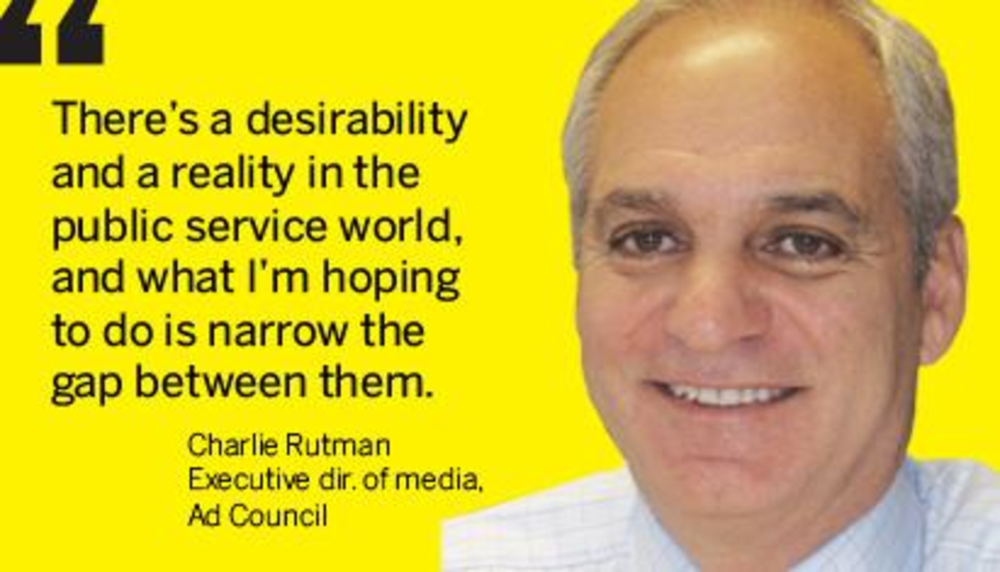Media vet Charlie Rutman discusses media buying and planning in the nonprofit and for-profit worlds
Q: In your new position at the Ad Council, you will be dealing with donated media rather than paid media. What are the differences in media planning for these two market sectors?
A: Like the Rolling Stones say, “You can’t always get what you want, but you try sometimes and you get what you need.” A campaign sponsor understands that there’s a desirability and a reality in the public service world, and what I’m hoping to do is narrow the gap between them. Some times, it’s modifying what you desire. It’s going to be different by campaign and different by conversation with the various media owners.
Q: What metrics do marketers look at to determine media effectiveness?
A: That’s the age-old question. Everybody from Procter & Gamble to startups and all marketers in between have asked that question. First, what is the definition of effectiveness? You also have to separate the media component from all other variables. With something like laundry detergent, the media plays a big role, but so does distribution, price, packaging, promotion and competitive activity. In the public service world, we have some more measurable outputs of consumer behavior that might be a good leading indicator of effectiveness. Every marketer deals with it in their own way based on their needs, available research and definition of effectiveness.
Q: How does the use of metrics separate direct media buying from branded?
A: The single biggest difference is that there is a measurable response. If I’m selling a Snuggie, and I run an ad for it, inside of a few minutes I can tell what the response is. When the marketplace is a little softer like it is now, there’s more time for direct response marketers at lower prices. The spots are pre-emptable, but in terms of availability it’s a good time for the direct response business. Things have tightened up a little bit, but that’s the ebb and flow of the industry.
Q: Why don’t direct response advertisers buy prime media slots even when they’re more expensive?
A: Because one of their benchmarks of success is cost per response. If I have a spot that costs $100 and it gets 100 responses, when it goes up to $150 and I know I’m not going to get more than 100 responses I can’t do it. It’s not more complicated than that. It’s a cost per lead generation business. Of course, lower price is a big component of that.
Q: Media selection isn’t always the sexiest part of a campaign, but it is important to success. What should marketers look at when deciding where to go?
A: Who is the target audience, when are they most receptive to messaging, what is the best messaging environment, how many people do I want to reach and how often. There’s volumes of indicator and proprietary research, assumptions and so on that go into making those decisions.The development of marketing objectives and strategies depends on what that research looks at.







